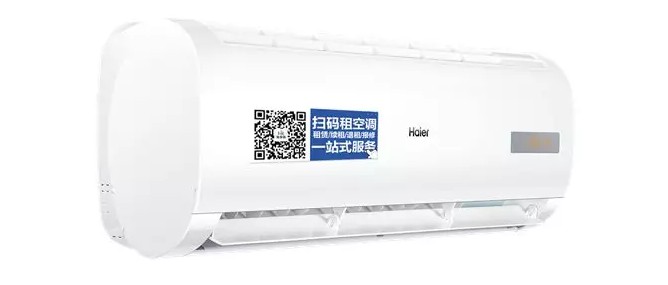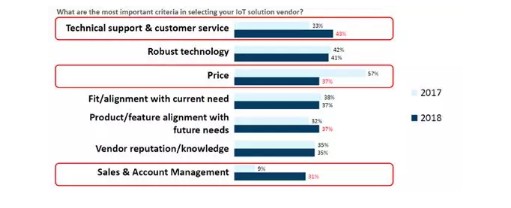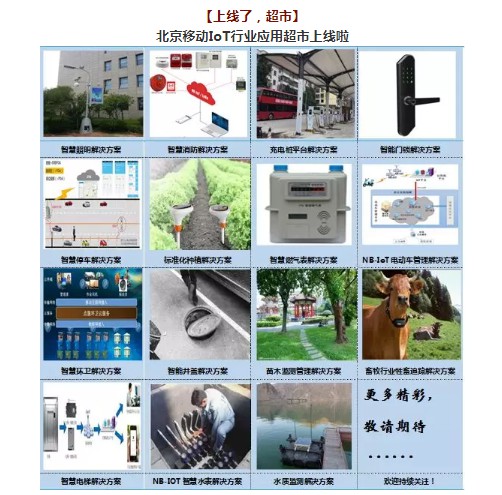2019-04-26

On April 10, during the China Electronic Information Expo, the author hosted a “China NB-IoT Industry Development Conference”. This is the largest NB-IoT theme conference that the author has participated in for three years. This conference not only has the participation of upstream manufacturers such as chips, modules, equipment vendors and operators, but also has 8 downstream industry application cases, among which It is a scaled application that has achieved a million-level connection. Since the NB-IoT core agreement was frozen in June 2016, it has been less than three years since its commercialization, and it has gone through 10 years of other communication standards. However, the low-power wide-area IoT has now passed the stage of propaganda and market education. It is meaningless to compare the advantages and disadvantages of different technologies and standards, but it is at the stage of verification. The NB-IoT industry is now clearly presented. Some new features.
Three characteristics to meet the verification of large-scale applications
New things will generally go through a lot of bumps in the initial stage of development. After three years of going through the road of 10 years, it must be the result of the industry's joint efforts to overcome many difficulties. Although NB-IoT is not blooming everywhere, it is indeed preparing for large-scale applications in many aspects. The author believes that there are three characteristics that can clearly reflect this trend.
(1) The demonstration effect of scale connection is obvious
By the end of 2018, the number of NB-IoT connections in smart metering, intelligent fire protection, and electric bicycle management has exceeded one million. From the perspective of the vast market in the country, the million-level is not a large-scale application, but we can see that many industry applications are concentrated in a small scope, and many applications have reached hundreds of thousands of connections, even Millions of connections. In the case of such large-scale application, the significance of the demonstration effect formed by the same industry or other industries is very huge. Under the effect of large-scale demonstration, the basis for further replication has a foundation.
First, the large-scale connection of individual projects has fully exposed various technical problems in the commercial industry, enabling the industry to overcome various major technical difficulties. For example, as a public network, NB-IoT needs to be tested for signaling storms formed by large-scale terminal data transmission. Only a large number of NB-IoT terminals are deployed in the same area (for example, there are thousands of terminals in one cell). In order to expose this issue for relevant personnel to analyze and propose solutions.
Second, large-scale connected terminals can form a certain business model and bring new changes to the traditional industry. In many areas of To B and To G, the adoption of IoT-related solutions can theoretically lead to cost savings and revenue growth, but only if there is a certain scale of deployment, only a few terminals can not reflect the transformation of business models. influences. Multiple single-item projects have large-scale NB-IoT terminal deployments, giving users the value of surpassing connectivity.
These large-scale applications of NB-IoT have indeed formed a demonstration effect in technological breakthroughs and business models. For example, Jinka Intelligent has achieved more than 1 million smart gas meter shipments and applications, deploying more than 100,000 NB-IoT gas meters in multiple projects, which not only provides many references for operator network optimization and product planning. It also brings new opportunities for gas users to operate based on data; the scale of Henan electric bicycle management has not only promoted the improvement of NB-IoT+ Beidou location information technology, but also formed a win-win situation for public security, operators, insurance companies and the government. mode.

(2) Bring more innovation space to the vertical industry
The development of the NB-IoT industry is not only based on the introduction of a new set of standards, the deployment of a new network and the provision of different connection technologies in the industry chain of the communications industry, but in the various industries of the national economy on the basis of NB-IoT. Form more innovation space and drive the spontaneous demand of various industries.
residences. On the one hand, direct purchase of air conditioners will create huge financial pressure on schools. On the other hand, students’ demand for air conditioners in dormitory is becoming more and more intense. The “Haixiang Rent” project is adopted. The method of renting and purchasing does not require the school to pay the cost to uniformly install air conditioners for student residences. Students voluntarily pay for the use of air conditioners. In this process, the remote management of air conditioners is a pain point for air conditioner operators. Previously, the air conditioner was connected via WiFi, but this method has many inconveniences. After the NB-IoT connection, the air conditioner data can go directly to the platform.

The “Haixiang-rent” model is a way for manufacturers of air-conditioning industry to innovate spontaneously after the NB-IoT infrastructure is deployed. The value of transcending connections lies in the changes brought about by the industry. Each industry will also play its own ingenuity. Innovations like this are increasing in various industries.
(3) From supply pull to supply and demand
The author has mentioned the three-stage path of NB-IoT industry development in many previous articles. At present, the industry has entered the second stage, that is, the stage of supply pull and demand push together.

In this stage, the supplier provides all the conditions of NB-IoT, and the spontaneous innovation of the demand side can bring more unexpected business models and values, driving the whole industry to mature in the third stage industry. Some manufacturers that were originally in the traditional industry also actively promoted the development of NB-IoT. For example, the Zhongxiaoyun Research Institute is a smart fire-fighting platform based on NB-IoT initiated by traditional fire-fighting industry manufacturers. On the basis, start cutting into the NB-IoT smart door lock.
Just as the above mentioned innovation space for various industries, in addition to policy-driven metering, electric vehicle management, fire protection and other industries, companies in various consumer sectors are also launching various innovations based on NB-IoT. Consumer-grade NB-IoT products, as a market-oriented behavior, this trend has begun to emerge.
For example, household air purifiers and fresh air equipment for air pollution have begun to implant NB-IoT modules. NB-IoT pet tracking devices are available for purchase, all kinds of bags, liquor, and wear. Equipment, even masks, are also starting to use NB-IoT. The consumer goods market is a mature wind vane. When the consumer goods market reaches a certain scale, NB-IoT will accelerate into the third stage.
The transformation of user demand brings about the transformation of supplier's industrial ecology
According to market research firm Strategy Analytics's survey of thousands of IoT users, among the main factors considered by users when choosing an IoT solution provider, the primary consideration for 2017 users is price, and the concern for price far exceeds other factors. However, the primary consideration in 2018 has become technology and service support, and the price factor has fallen to third place. It can be seen that the user's sensitivity to price is gradually decreasing, and the high demand for technology and service is a trend. In my opinion, NB-IoT is the pioneer of the cellular Internet of Things. This trend is more obvious, and it has also experienced this trend in the past three years.

Taking operators as an example, as a public network, operators have made great contributions to the industry. Just from the income calculation, NB-IoT may not be a good business for operators, but it has great significance for the development of the entire IoT industry ecology. “To get rich, build roads first”, network infrastructure deployment is dirty and tired. Someone needs to bear the work.
However, when the Internet of Things penetrates into the production and operation processes of various industries, it is increasingly necessary for suppliers to have end-to-end solution capabilities, and the supplier's industrial chain resources are more important. As a builder of infrastructure, telecom operators have also formed a huge industrial ecological resource in many years of operation. The author has sorted out the resources of operators and enterprises in the "gold mine" of To B resources, the operator's Internet of Things Nugget Road. On this basis, operators can play their wide range of customers. Contacts have become an entry point for end-to-end solutions for a large number of industry users.
When the demonstration effect of large-scale connection and the vertical industry innovation space appear obviously, when the supply and demand sides jointly exert their strength, the NB-IoT industry no longer needs to instill the old-fashioned "low power consumption, long distance, large connection, low cost" The propaganda word, but actually to show the industry the technical and commercial changes it brings, to carry out large-scale verification.
[Online, supermarket]
Beijing Mobile IoT industry application supermarket is online

In order to continuously promote industrial cooperation, realize industrial chain resource sharing, integration and development, and gather the advantages of partners in various fields, Beijing Mobile actively cooperates with partners in the Internet of Things Alliance to jointly create vertical industry IoT application solutions and establish IoT industry application supermarkets. To provide a package solution for industry customers. In March 2019, Beijing Mobile IoT Industry Application Supermarket was officially launched, the first batch
Select 15 programs in six areas for release